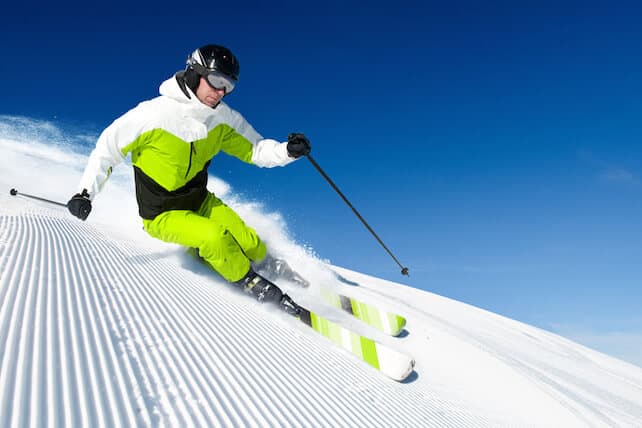
Vincent Lalanne knows a thing or two about snow. Director of the Association of Les 3 Vallées, he lives in Courchevel, with the world’s biggest interconnected ski area on his doorstep. He’s been skiing since he was 12, and on clear evenings he and his wife Magali often go ski touring from their chalet in Courchevel Village up to the Col de la Loze. “At the top, we look out over the lights of the resort and the mountain summits under the stars,” he says. “I can’t think of a better way to end the day.”
We all know the feeling: that delicious moment when you pick up speed on a freshly-groomed piste (parfaitement damée as we say in France), and realise how soft, cold and grippy the snow is. Suddenly, your edges are running so smoothly and securely, it’s as if they’re mounted on rails. You can relax, lean into your turns and really enjoy your skiing.
The problem is, if you don’t take account of the weather, the condition of the snow, and the number of other skiers in your resort, you’ll find that perfect-piste sensation all too fleeting. So here, I’ve put together ten tips for maximising your exposure to the good stuff. Follow them all, and you should find the quality of your skiing day improving dramatically.
1. Keep an Eye on the Weather Before You Go
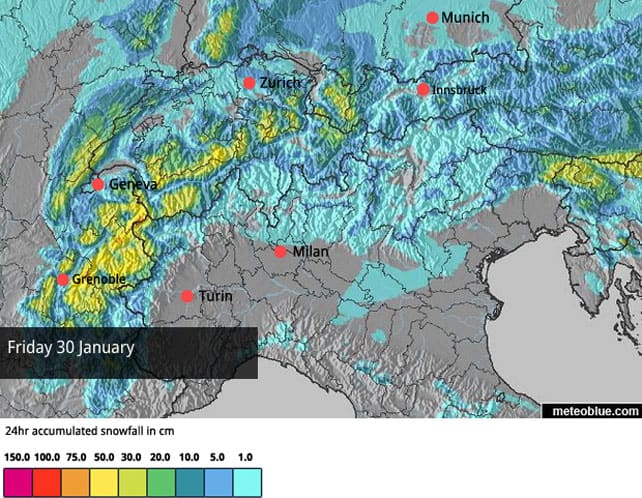
Checking online snow reports and forecasts in the run-up to your trip will give you a head start when it comes to planning your first day of skiing. Was it snowing hard in the week before you hit the resort? And are clear skies and low temperatures in the forecast?
Well then, you can relax. You’ll find soft and grippy pistes right across your ski area. By contrast, if you’re going to arrive in the middle of a thaw, you’ll need to adopt spring-skiing tactics (see below), to get your holiday off to the best possible start.
2. Talk to the Locals
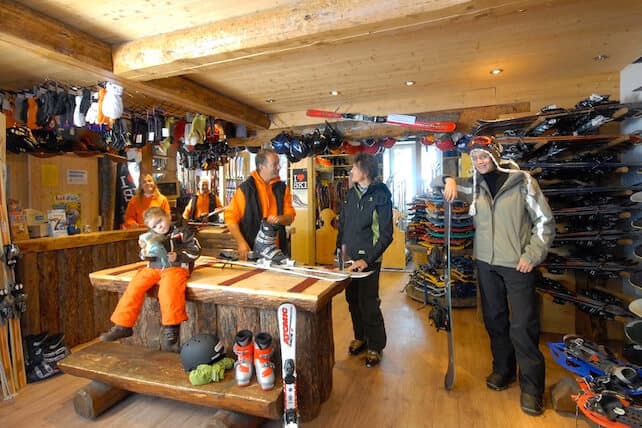
One hidden benefit of ski hire is the conversation you can have with the guys in the rental centre at the start of the week. They’re almost always skiing addicts and love talking about the snow. Ask them what the pistes are like at the bottom and the top of the ski area, as well as in the sun and the shade. And what are their favourite runs? Bring a piste map with you so you can make notes.
3. Check the Grooming Reports
What are you looking for each morning? This?
Or this?
Either way, you need to check the daily grooming report, to find out which pistes have been smoothed out by the piste bashers and which have been left as moguls. The information comes in several forms: sometimes it’s presented on a board at the hub of lifts and pistes, sometimes on the resort website, sometimes on an app. Ask at the lift ticket office if you don’t know where to find it.
4. Get Up Early

Yes, I know you’re on holiday. But if you love the soft, smooth, consistent surface of a freshly-groomed piste, you’ve got to get up early. So try to be first in the queue when the lifts open, and attack all the most popular runs in the first hour – before the human traffic starts to work the snow into bumps. Not only will you get the best skiing surface of the day, you’ll also have acres more space in which to make your turns.
5. Be a Fringe Fanatic
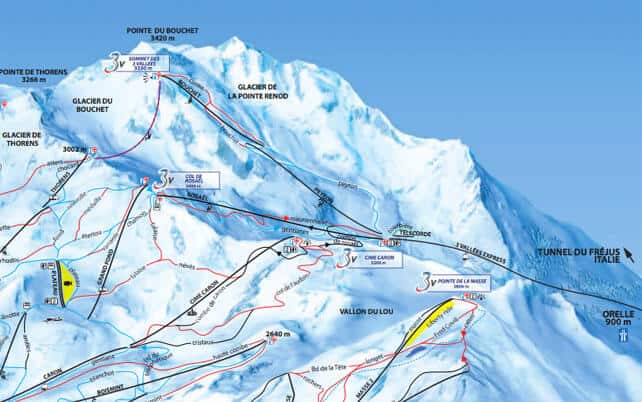
Once you’ve skied the most popular pistes at the start of the day, it’s time to navigate to the fringes of the ski area (once you’ve checked the grooming report, of course). You’ll almost always find the quietest pistes there, and the longest-lasting groomed skiing surface.
6. Don’t Leave Steep Runs Until the End of the Day
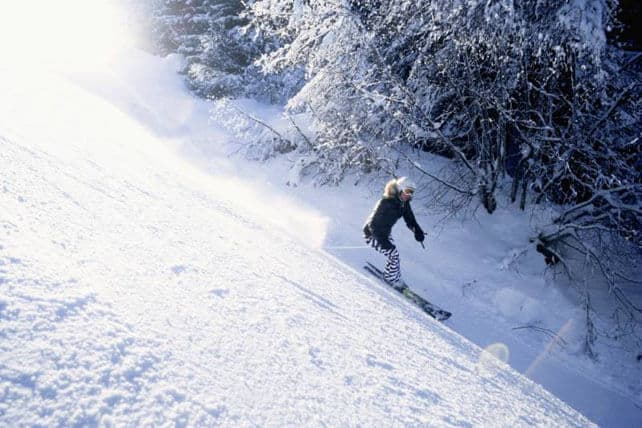
If you fancy a crack at one of the black-rated pistes in your resort, then do it before 11am. Most skiers and snowboarders skid and scrape their way down a steep run, and it’s not long before moguls start to form – with the occasional patch of icy underlayer in between.
Of course, if you’re a good skier, then skiing two or three kinds of snow in a single turn can be a satisfying challenge. But if it’s smooth and easy turns you’re after, then get there before everyone else does.
7. Aim High

Having trouble finding soft, cold snow in your ski resort? Then take a look at the piste map. Are there any pistes marked above 2500m? Try skiing those, especially if they don’t get a lot of sunshine.
This isn’t a failsafe tactic: some exposed, high-altitude pistes are scoured by the wind, and can be permanently hard-packed as a result. But many are sheltered in deep combes and high, mountain bowls that naturally collect wind-blown snow. They’re usually a joy to ski from December to the end of April.
8. Look North
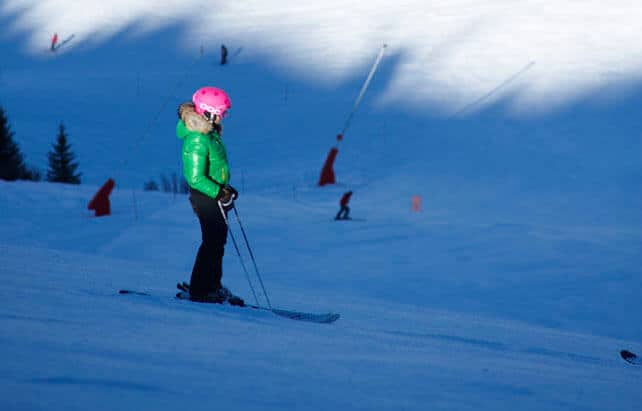
It’s obvious that sunshine affects snow quality, but not many piste skiers take account of it when looking for high-quality snow. Even in mid-winter, the best pistes are usually the ones that get the least sunshine, because their cover has stayed consistently cold for weeks.
9. Adopt Spring-Skiing Tactics in a Thaw

One of the biggest challenges facing piste skiers is how to get the best from a mild spell in the mountains. Pistes that get a lot of sun will become slushy as the day progresses, and then – after they’ve been groomed – refreeze overnight, so that they’re rock hard first thing the following morning. Unwary skiers can find themselves either skittering around on ice, or wallowing in what feels like mashed potatoes, with barely a decent turn in between.
It needn’t be like this. There’s a simple trick you can use to serve up a morning of superb skiing on even the steamiest April day, which is this: follow the sun around the slopes. Start skiing the east- and southeast-facing pistes first. By 10am on a warm, sunny day the top layer of snow will have softened just enough to the make the run grippy and easy to ski, whilst still being firm underneath.
It should stay in this wonderful, ego-boosting condition for maybe 45 minutes (it depends on the warmth of the day), before it becomes uncomfortably slushy; at which point you move on to the south-facing pistes, then the west-facing ones, and finally those with a northerly aspect. You can usually keep going until 2pm this way. At which point, it’s time to stop, and reward yourself with picnic, or a late lunch on a restaurant terrace.
10. Hire a Guide if You Want to Ski Off-Piste
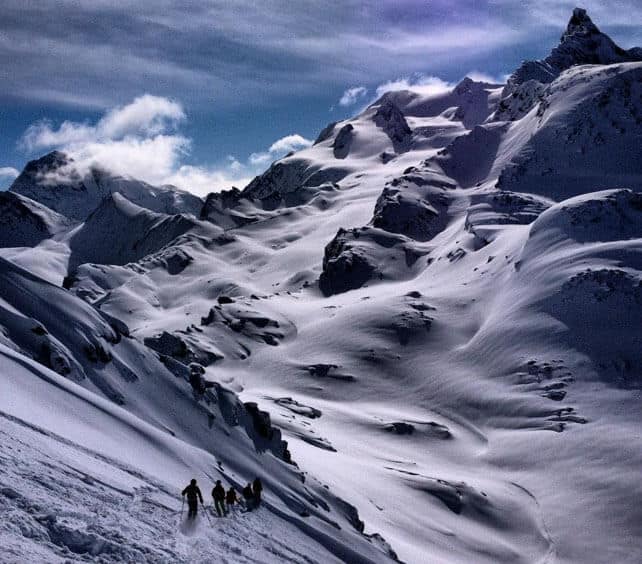
I don’t really want to talk about skiing off-piste here: it’s much too big a subject. But if you do want to venture away from the pistes in search of powder snow, it’s always best to hire a qualified local guide, either through the local mountain guides office, or one of the ski schools.
That’s not simply because they’ll help to keep you safe; for example, by designing an itinerary that takes account of the current avalanche risk. It’s also because they also know where the secret stashes of powder are. So, when every scrap of off-piste visible from the chair-lifts appears to be tracked out, they’ll often lead you to relatively unskied slope only the locals know about.
See also our feature on Where to Find the Most Reliable Snow Conditions in the Alps.











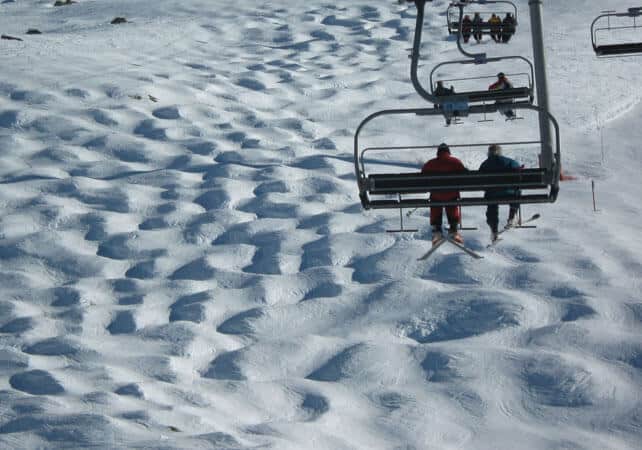
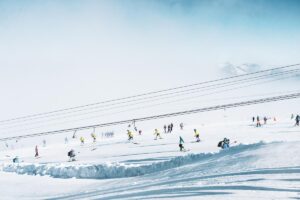
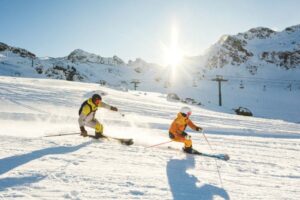

Really interesting and useful article. Well done.